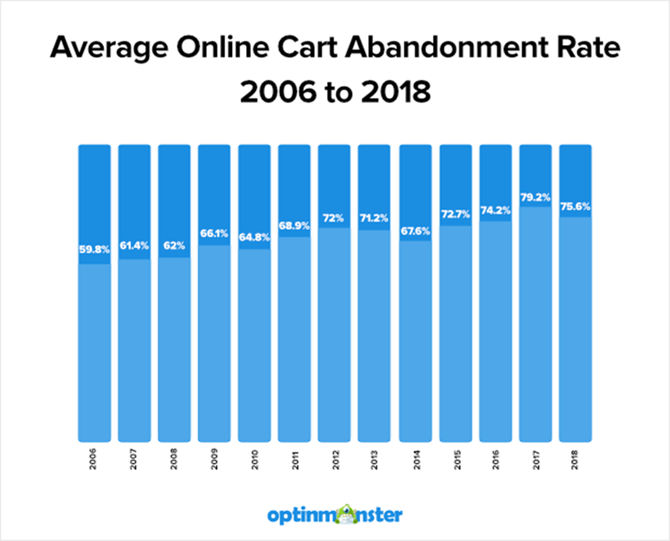Trends in commerce continue to change from moment to moment. While some trends are just passing fads, others are responsible for significant changes in the industry. Online shopping and mobile shopping fall into the latter category. Customers today are more selective and meticulous than ever before. According to Adobe, 38% of online shoppers will leave a site if the design is not appealing. For this reason, businesses invest heavily in creating clean and easy-to-navigate websites that make the purchasing process as intuitive as possible.
What is User Experience in E-Commerce?
In simple terms, the central idea behind UX design is to get into the head of your end-user and understand what will provide them with a simple, logical, and enjoyable experience during their browsing. User experience in e-commerce is also related to the perception a user has after interacting with your website – is it positive or negative? Have you ever wondered why about 76 out of every 100 visitors to your site eventually abandon their shopping cart? The answer is simple – they are just not impressed.

It is very important to make a great first impression, whether it’s the first, second, or even the hundredth time. Imagine walking into a “real” store. You are looking for something difficult to find. When you ask for help, you encounter a customer service representative who is busy on the phone – playing a game or texting. How would you feel? Frustrated? Discouraged? You would likely just leave the store! These feelings also apply to online businesses. The increase in shopping cart abandonment leads to significant revenue loss.
User Experience in E-Commerce Leads to Conversion
According to Amazon CEO Jeff Bezos, “If you build a great experience, customers tell their friends.” Word of mouth is extremely powerful. UX design plays a central role in the success or failure of any e-commerce activity, and it’s not just limited to aesthetics. From basic logic and transitions to micro-interactions that are simple and clear, quick system feedback, presenting products in an attractive way, an easy checkout process, and a collection of intuitive features, every aspect of this can directly or indirectly affect your e-commerce success.
Some of the basic yet crucial factors you should consider include:
- Operational simplicity
- Design that doesn’t overshadow the core purpose – e-commerce
- Product promotion
- Visual elements like menus and catalogs
- Good search experience
- User data security
A bad user experience is like visiting a very messy and disorganized retail store. A good example is the website SkullCandy. The popular site stands out from its competitors with great colors and product images. Product pages display excellent product descriptions and information. Whether it’s their products, music, or company culture, the company definitely makes significant efforts. The first impression while browsing the site is excellent – it offers a smooth, seamless flow that captivates the user at every moment. Overall, mobile e-commerce design is unmatched in terms of the customer journey it offers and creating quick engagement.
Anticipating User Expectations
“The key is to set realistic expectations for customers and then not just meet them, but exceed them – ideally in unexpected and helpful ways.” – Sir Richard Branson. Customers serve as brand ambassadors, significantly promoting your products and services. Therefore, user research is essential to identify their needs, meet or even exceed their expectations, and deliver the best experiences.
Here are a few suggestions to help you build better relationships with customers in this era of endless possibilities:
1. A Seamless Experience
For example, if you already have a physical store, integrate the experience across both channels. Try offering a service where users can easily return items purchased online to a retail store. Anywhere you can save time for your customers is an opportunity for your e-commerce business to succeed.
2. Users (including Google) Demand Speed
“2 seconds is the threshold for e-commerce sites. At Google, we aim for less than half a second.” – Maile Ohye, Google. Consumers want to find what they are looking for quickly, or they will move on. Page load speed is something even Google considers when calculating your site’s ranking. According to several studies, 9.6% of visitors will bounce if the page load time exceeds two seconds. Each customer has unique value; slow speed can lead to significant losses in revenue.
- Ensure your web pages load quickly with all images
- Avoid a high bounce rate; it harms SEO
3. A Fresh and Accurate Site
E-commerce stores are not meant to be built and left – they need to be continuously developed. Therefore, consider the following:
- Update your site’s design
- Ensure the site is responsive
- Update content frequently
Customers need easy access to information, such as whether a product is in stock or how long delivery will take, customer reviews, etc. One of the tricky points for customers is when a product is listed as in stock, but they later find out at checkout that it’s out of stock.
4. Accurate and Attractive Information
Make sure to answer all general questions about your business, products, and return policies on your site, and allow a quick view of product pages while scrolling through the catalog.
5. Actively Request Feedback
Customer feedback surveys are a must. Businesses should ask for customer opinions – before there’s a problem. You can add feedback forms to your site. This also shows that you care about what your end users think or feel. Many websites also offer live chat to communicate with visitors while they’re on the site and provide a personal touch.
In the end, whether it’s acquiring new customers or driving loyalty for existing ones, brand positioning and customer experience are at the core of the matter.
For details about our customer and user experience design services, contact us
“`



